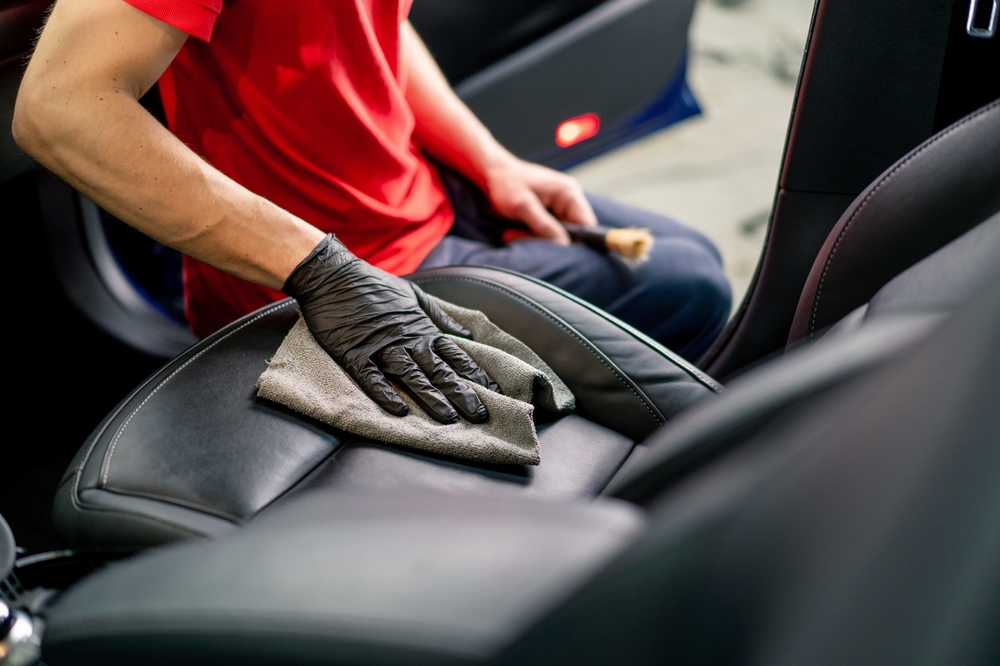
Easy Ways To Protect Your Leather Car Seats: FIXIGO
Leather seats are a popular choice for a reason! They add a little bit of class, and they're comfortable yet resilient. There are mainly two types of leather used in cars:
Natural Leather: This is real leather made from animal skin. It is known for being high quality, soft, and allowing air to pass through. Over time, it often gets a nice look called patina.
Synthetic Leather: It is also sometimes called faux leather. Artificially made by man, it is generally cheaper. Generally, it is easier to clean and resistant to stains; it may not be as comfortable as natural leather, though.
Beyond their type, leather seats raise the aesthetic appeal of a car and give any vehicle an upmarket feel. Leather is tough yet can be fragile. Some common problems you may encounter are cracking and fading, stains and spills, and wear and tear in the long run.
1. How to Care for Leather Car Seats:
- The leather cleaning products should be pH-balanced and specifically made for leather. Some products do not contain alcohol or any strong chemicals.
- Clean using soft cloths or microfiber towels. A soft brush will suffice for more thorough cleaning.
- Do not use bleach or any all-purpose cleaners because they can harm the material.
- Try to clean your leather seats every 1-3 months, depending on use.
- Wipe the seats with a soft cloth.
- Apply your cleaner onto a cloth, not onto the seat itself.
- Gently massage circularly.
- Finish with a damp cloth to remove the residue.
- Regularly check for wear, fading, or staining to allow you to take corrective action before the conditions continue to deteriorate.
- UV protection is important because UV rays will cause the leather to fade and deteriorate over time.
- Look for leather conditioners and protectant products that provide UV protection.
- Sunshades can make your car cool and protect the interior against sunlight while it is parked, but window tinting gives more protection.
2. Stain Management Techniques:
- Always blot spill-having fibers with a soft cloth; never rub, as it makes the stain worse.
- Blot to absorb liquids gently without damage to the surface.
- Keep a leather-safe cleaner handy for emergency cleanups.
- Clean up spills immediately with a damp cloth and some soap, if needed.
- Take a cotton swab and dip it in rubbing alcohol. Gently dab the ink stains to remove them, but first try it in a hidden area.
- Sprinkle some cornstarch on the spot, allow it to absorb the oil, and then vacuum it off.
Car Dry Cleaning and Professional Restoration Services:
If your car seats have tough stains or are really dirty, it's a good idea to call FIXIGO, a professional car dry cleaning service. They offer dry cleaning that can make your leather seats look like new again, using special treatments that regular home cleaning might not provide. Dry cleaning keeps the leather clean without using too much water, which helps prevent mold and keeps the material in good shape.
The cost for services like dry cleaning and conditioning is usually between 8k and 12k every 1-2 years, depending on how much work is needed.
3. Wearing Protective Accessories:
- Conditioning your car seats prevents the leather from drying and cracking while retaining its natural glow.
- Find conditioners made for your type of leather, natural or synthetic.
- Apply conditioner every 3-6 months, following product instructions.
- Canvas, Neoprene, or any other synthetic material.
- Custom-fit covers are the best choice for protection because they fit your seats closely.
- They are easy to clean and will drastically reduce any wear and tear on your original leather.
- Dirty floors can transfer dirt and moisture to your seats.
- Employ rubber or weather-resistant mats to catch dirt, water, and debris.
- Choose mats that cover well and fit well to prevent any moving parts from scratching your leather.
4. Seasonal Care for Leather Seats:
- Wipe salt and snow off seats whenever possible since salt and snow can leave stains.
- A thorough cleaning when the season changes helps remove built-up grime.
- If at all possible, park indoors to reduce extreme temperature changes.
- Parking in the shade or with a windshield shade undo the effects of overheating and fading.
- Take good care of your leather; remember, dry heat saps the moisture.
- Breathable seat covers can be used to keep your seats cool and protect them from sweat and spillages.
- Look for dryness, stains, and visible damage.
- The seat covers, or protection accessories could be replaced based on the season.
- Mark your calendar for times when inspections and cleanings need to be performed.
Conclusion
The real caring for leather car seats involves not only cleaning but also regular care and protection. You can keep your leather seats nice, choose the right cleaning products, establish routines, and use protective items to help them last for many years. Let's prevent wear and tear-your car seats will thank you, and so will you.
Download the app now for a premium car wash experience—available on Google Play Store and Apple App Store!
FAQs
Q. How often should I clean my leather car seats?
Do a deep clean every 1-3 months, depending on the usage.
Q. What if my leather car seats have already sustained some damage?
Proceed to check the extent of the damage. Minute cracks are usually doable at home, while major damage may require professionals like us.
Q. Can regular household cleaners be used on leather?
Absolutely not, since regular cleaners can damage leather. Try to apply pH-balanced products for better results.
Q. Does conditioner help with leather seats?
Yes, since conditioner helps to stop drying and cracking, it also keeps the leather soft.


Share Post